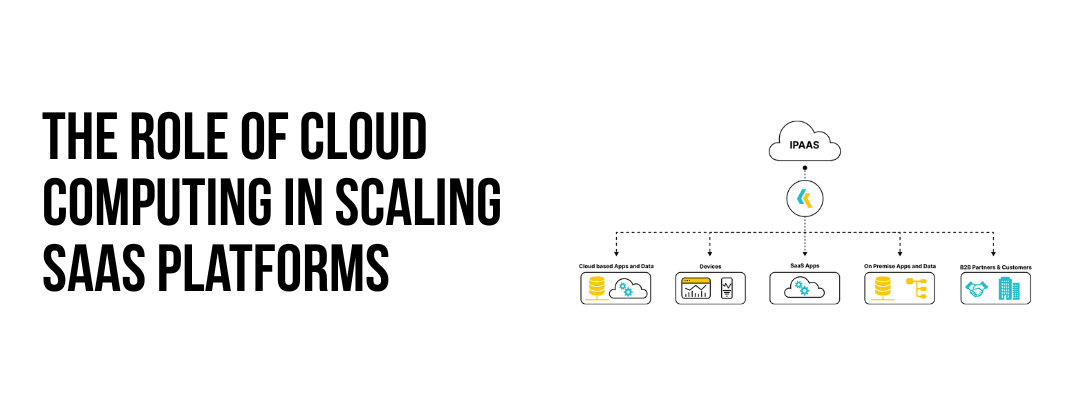SaaS has become a cornerstone for businesses of all sizes. With the rise of cloud computing, scaling these platforms has never been easier. But what exactly is the relationship between cloud computing and SaaS?
SaaS and Cloud Computing
What is SaaS?
SaaS refers to software applications delivered over the internet, allowing users to access software through a web browser without needing to install or maintain it locally. Common examples include applications like Google Workspace, Salesforce, and Dropbox.

What is Cloud Computing?
Cloud computing, on the other hand, refers to the delivery of computing services over the internet, including servers, storage, databases, networking, software, and more. This technology enables on-demand availability of resources, allowing businesses to scale up or down as needed.
The Intersection of SaaS and Cloud Computing
SaaS applications are typically built on cloud infrastructure. This synergy between SaaS and cloud computing allows for greater flexibility, scalability, and efficiency. As businesses evolve, the ability to easily scale their SaaS platforms becomes crucial, and cloud computing plays a vital role in this process.
The Importance of Scalability for SaaS Platforms
What Does Scaling Mean?
Scaling refers to the ability to increase or decrease IT resources as needed. For SaaS platforms, this means accommodating more users, adding features, or enhancing performance without disrupting existing services.
Why is Scalability Critical?
As companies grow, they require more resources to support their expanding user base. An effective scaling strategy ensures that performance remains consistent even as user numbers rise.
Businesses need to manage costs effectively. Scaling allows companies to only pay for what they use, avoiding unnecessary expenses.
In a complete landscape, being able to scale quickly can give a business an edge. Those that can adapt and grow faster often capture a greater market share.
How Cloud Computing Enables Scalability for SaaS Platforms
1. Elasticity
One of the defining features of cloud computing is its elasticity. This allows businesses to scale their resources up or down based on real-time demand. For instance, during peak usage times, a SaaS platform can automatically allocate additional resources to maintain performance, while scaling back during off-peak times to save costs.
2. Global Accessibility
Cloud computing facilitates global access to applications. This means that users can access SaaS platforms from anywhere, enabling businesses to expand their reach without the need for additional infrastructure. This global presence is particularly advantageous for SaaS companies aiming to attract users from diverse geographical locations.
3. Resource Management
Cloud platforms provide advanced resource management tools that help SaaS providers monitor usage, optimize performance, and predict future resource needs. By using analytics and machine learning, businesses can make data-driven decisions to scale effectively.
4. Rapid Deployment
With cloud computing, deploying updates and new features becomes more streamlined. SaaS providers can push updates quickly and efficiently, ensuring users have access to the latest functionalities without downtime. This agility is essential for staying competitive in the fast-paced tech landscape.
5. Growth
As SaaS platforms scale, security becomes paramount. Cloud service providers typically offer robust security measures, including data encryption, access controls, and compliance with industry regulations. This allows SaaS companies to focus on scaling their offerings without compromising on security.
Challenges in Scaling SaaS Platforms Using Cloud Computing
1. Cost
While cloud computing can offer cost savings, improper management can lead to unexpected expenses. It’s crucial for businesses to monitor their cloud usage and implement cost-control measures to avoid overspending.
2. Issues
As SaaS platforms scale, maintaining performance can be challenging. Bottlenecks can occur if resources are not adequately provisioned. Regular monitoring and optimization are necessary to ensure smooth operations.
3. Vendor Lock-in
Many SaaS companies rely on specific cloud providers, leading to potential vendor lock-in. This can limit flexibility and make it difficult to switch providers or adapt to changing business needs. Businesses should evaluate their options and consider multi-cloud strategies to mitigate this risk.
Future Trends in Cloud Computing and SaaS Scaling
1. Artificial Intelligence and Machine Learning
The integration of AI and machine learning into cloud services will play a significant role in optimizing resource management for SaaS platforms. Predictive analytics can forecast usage patterns, enabling more efficient scaling.
2. Serverless Computing
Serverless computing allows developers to build and run applications without having to manage servers. This can lead to reduced costs and simplified scaling processes, as resources are automatically allocated based on demand.
3. Security Measures
As cyber threats continue to evolve, cloud providers will invest in advanced security measures to protect SaaS platforms. This includes improved encryption, AI-driven threat detection, and compliance automation.
4. Edge Computing
Edge computing involves processing data closer to where it is generated rather than relying solely on centralized data centers. This can enhance performance for SaaS applications, particularly those requiring real-time processing.

The role of cloud computing in scaling SaaS platforms is undeniable. By using the flexibility, accessibility, and advanced resource management capabilities of the cloud, SaaS providers can meet the demands of a growing user base while remaining cost-efficient and competitive. However, it is crucial to navigate the challenges that come with scaling, such as cost management and performance optimization.
As technology continues to advance, the future of cloud computing and SaaS scaling looks promising. With emerging trends like AI, serverless computing, and edge computing, businesses can improve their SaaS offerings and drive growth in the digital age.




